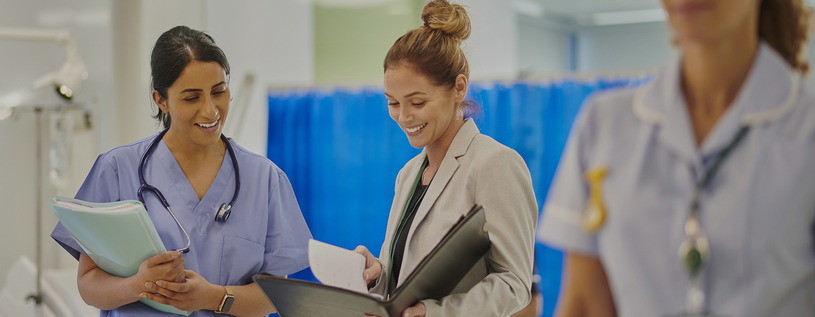Best Practices in Medical Management for Improving Effectiveness and Lowering Expenses
In the ever-evolving landscape of health care, the pursuit of ideal methods in medical management is vital for enhancing performance and curbing expenditures. By integrating sophisticated modern technologies such as digital health and wellness records and telemedicine, doctor can improve procedures and boost individual care. Innovation alone is not a cure all; maximizing resource allowance and cultivating collective interaction amongst treatment teams are similarly vital. As companies make every effort to stabilize quality and cost, what strategies should be focused on to accomplish these double goals? The answers to these inquiries hold the trick to a much more sustainable healthcare system.
Leveraging Advanced Technology
The assimilation of electronic options right into healthcare systems has changed the means facilities operate, streamlining processes and enhancing individual treatment. By streamlining patient information, EHRs eliminate the need for difficult paperwork and promote seamless communication amongst medical care carriers.
Telemedicine is an additional technological improvement that has transformed patient interaction. It provides comfort for both individuals and medical care professionals by allowing remote appointments, which can minimize the need for in-person gos to and maximize consultation scheduling. In addition, telehealth platforms can prolong medical care access to rural or underserved areas, bridging voids in treatment distribution.
Additionally, the use of Expert system (AI) and artificial intelligence is ending up being significantly prevalent in predictive analytics, allowing for very early detection of possible wellness issues and more enlightened decision-making. These innovations, when incorporated successfully, can enhance diagnostic accuracy and personalize individual treatment strategies, eventually resulting in enhanced healthcare outcomes and functional performance.
Optimizing Source Allowance
By strategically handling resources such as workers, equipment, and funds, healthcare facilities can considerably enhance their operational performance, enhance person outcomes, and reduce unneeded expenditures. The initial step in enhancing resource allocation entails conducting an extensive assessment of current possessions and recognizing locations where resources may be underutilized or exhausted.
Prioritizing source appropriation based on patient requirements and solution demands is vital. This involves straightening sources with high-demand locations, such as emergency treatment or specialized treatments, to make certain prompt and reliable client treatment. Implementing adaptable staffing designs can likewise enhance labor sources by adjusting employees appropriation in action to varying person volumes. In addition, welcoming telemedicine and other technological remedies can relieve physical source restraints by providing different opportunities for patient-provider interactions.
Funds ought to be carefully monitored and assigned with critical insight to support both temporary functional requirements and long-term institutional goals. This includes investing in training programs that enhance staff competencies and adopting energy-efficient practices that minimize functional costs (medical administration). Ultimately, a maximized source allotment method cultivates a sustainable medical care setting that is responsive, effective, and monetarily prudent
Streamlining Operations Procedures
When health care centers objective to enhance functional efficiency, streamlining workflow procedures comes to be an essential focus. Efficient process lessen redundancy, get rid of unnecessary actions, and enhance sychronisation among medical care experts. This approach not just speeds up solution distribution however also boosts the top quality of individual treatment.

Next, modern technology assimilation plays a considerable function in enhancing process. Executing electronic wellness documents (EHRs) and digital doctor order entry (CPOE) systems decreases documentation, decreases human error, and makes certain information comes to all pertinent employees. Furthermore, leveraging telemedicine systems can streamline individual appointments and follow-ups, minimizing the pressure on physical framework.

Eventually, streamlined process lead to cost reductions and enhanced person fulfillment, fostering an extra sustainable healthcare atmosphere.
Enhancing Information Management
Structure upon structured process, maximizing data monitoring ends up being an essential part beforehand health care administration. Efficient information management systems are critical for preserving accurate person documents, improving decision-making, and guaranteeing compliance with governing standards. By applying robust data administration services, medical care centers can enhance the top quality of patient treatment while all at once lowering operational expenses.
One key aspect of improving data management is the combination of innovative electronic wellness record (EHR) systems. These systems assist in the seamless exchange of person info throughout different divisions, minimizing duplication of tests and reducing errors. A well-designed EHR system supports information analytics, allowing medical care providers to recognize patterns and make notified choices concerning client treatment.
Additionally, securing client information is paramount. Taking on thorough cybersecurity actions, consisting of security and regular audits, guarantees the honesty and discretion of delicate information. This not just secures individuals yet additionally keeps the establishment's credibility.
Investing in personnel training is an additional critical aspect. Informing medical care professionals on information monitoring techniques improves their ability to efficiently utilize technology, bring about boosted patient end results. To conclude, enhancing information monitoring via sophisticated innovation and comprehensive training is essential for attaining efficiency and cost reduction in medical management.
Fostering Collaborative Communication
An important part in progressing clinical management is promoting collaborative interaction among medical care professionals. Reliable interaction is vital for making sure seamless person care, enhancing therapy results, and lessening errors. By motivating open dialogue and sychronisation across multidisciplinary teams, healthcare organizations can boost their functional performance and decrease unneeded expenses.
Central to this technique is the combination of interaction innovations such as electronic wellness records (EHRs) and protected messaging platforms, which help with the rapid exchange of crucial client info. These devices make it possible for healthcare carriers to gain access to and share information in genuine time, ensuring that all group members are educated and lined up in their decision-making procedures. Normal group conferences and interdisciplinary rounds can additionally promote a culture of partnership and accountability.
Training programs focused on enhancing interaction skills are also essential. These programs can help staff establish the ability to communicate info clearly and pay attention proactively, thus click resources minimizing misunderstandings and fostering a helpful workplace. Additionally, embracing standardized interaction procedures, such as SBAR (Scenario, History, Analysis, Referral), can streamline the exchange of info, guaranteeing that essential details are shared succinctly and properly. Inevitably, cultivating collaborative communication leads to enhanced health care delivery and cost financial savings (medical administration).

Verdict
Incorporating innovative technology, such as digital health and wellness records and telemedicine, alongside optimized resource allocation and structured process procedures, is important for enhancing effectiveness in medical administration. Effective data management and promoting joint interaction among healthcare groups are vital for minimizing redundancies and enhancing treatment high quality. By prioritizing precautionary care and taking part in high quality enhancement efforts, healthcare organizations can accomplish considerable expense savings and boosted patient outcomes, consequently making certain Web Site lasting healthcare distribution in an increasingly intricate setting.